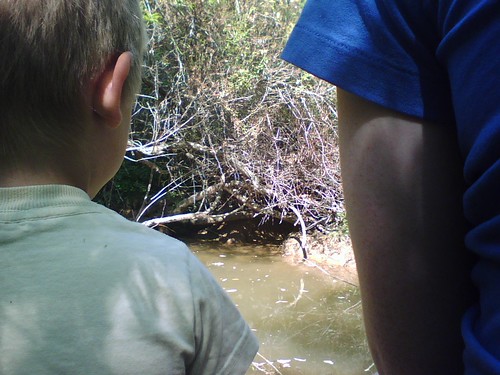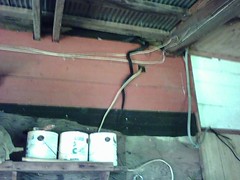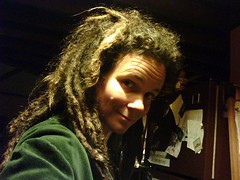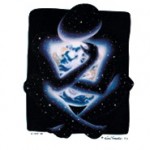Hey, Beautiful, What’s the Name of Your Car?
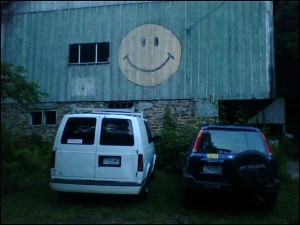 A rose by any other name might remind some people of a pickle. Whether it’s a person, a house or the street on which they stand, a name is an opportunity to make a statement. Maybe it’s the screenwriter in me, but I think names are important symbols. I have a reputation for anthropomorphically naming everything in sight. Take cars, for example. My car is The Blue Goose. The one before that was Portia Fay. Before that, Scooby-Doo Subaru. Just as people with green thumbs talk to houseplants, I find that my car runs better if I talk to it and call it by name. And it tells me much about a person when she or he has named a car. I have used it as a litmus test in more than one relationship.
A rose by any other name might remind some people of a pickle. Whether it’s a person, a house or the street on which they stand, a name is an opportunity to make a statement. Maybe it’s the screenwriter in me, but I think names are important symbols. I have a reputation for anthropomorphically naming everything in sight. Take cars, for example. My car is The Blue Goose. The one before that was Portia Fay. Before that, Scooby-Doo Subaru. Just as people with green thumbs talk to houseplants, I find that my car runs better if I talk to it and call it by name. And it tells me much about a person when she or he has named a car. I have used it as a litmus test in more than one relationship.
Someone said people make big money coming up with the actual model names of cars. Whoever named my Blue Goose “Honda CRV” should be washing cars instead. I should have that job, or one naming paint colors–native organic periwinkle, sagebrush compost–I could so do that job. Busstop bench maple…food co-op bubblegum…global warming sunrise…
Truthfully I connect deeply with the tribal idea that the names of people should have meaning and evolve or change with us through our stages of life. Of course, my moniker here is a midlife invention:
Wren [ren]: a small, unassuming bird with a loud song
Mika [mee-kuh: the wise little raccoon
Tuatha [2-ah-thuh: tribe, children of, people of; new meaning: she who is followed by goats
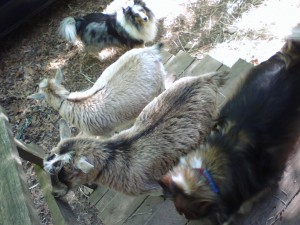 Clearly I’m guided by my love and identification with animals. My own pets are saddled with the names Tuatha, Echo, Wicca and Niabi. In case you’re worried, I would not do that to a human child. I just appreciate the opportunity to make meaning. Wouldn’t it be great to be known as, “flower planter,” or “she who brings the best dishes to potlucks?” Before I changed it, my legal name meant, “she who’s name is a list of her mother’s ex’s.” Oh joy.
Clearly I’m guided by my love and identification with animals. My own pets are saddled with the names Tuatha, Echo, Wicca and Niabi. In case you’re worried, I would not do that to a human child. I just appreciate the opportunity to make meaning. Wouldn’t it be great to be known as, “flower planter,” or “she who brings the best dishes to potlucks?” Before I changed it, my legal name meant, “she who’s name is a list of her mother’s ex’s.” Oh joy.
Anyway, my obsession with the sounds and meanings of names is passionate and long lived. I’ve had a library of baby name books from various cultures for nearly thirty years. Even as a kiddie poet in school, I tried on a succession of pennames, each with it’s own accompanying persona. The most famous one among my family is “Phoenix.” I have no memory of why I wanted to be called Phoenix, but it is legend.
When I was three, I was adopted by my stepfather and my last name changed to his. My mother tried to explain the change to me and made the mistake of asking what I’d like my name to be. The story goes that I replied, “If it’s all the same to you, Mother, I’d like Theresa!”
Now when I begin a script I spend days pouring through my baby name books and online resources to pick a weighty and meaningful, if pretentious name. Wren Mika started out as a character in a script. Others I’ve labored over include Persia, Cricket, Nia, Simone and Caprice. There may be a recovery program somewhere but I’m unrepentant.
So when I moved to Heathcote, my Intentional Community, and the buildings had such generic designations as the mill, greenhouse, carriage house, springhouse, cabin, farmhouse, hillhouse, I had to take leadership. If not
ThresaSheWho’sNameIsAListOfHerMother’sEx’sPhoenixWrenMikaTuatha
then who?
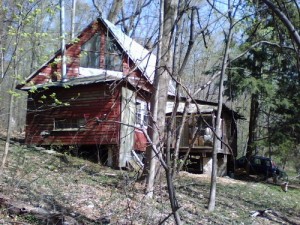 I moved into a cabin long called the hillhouse. Blah. After days of scouring the internet and keeping pages of scribbled lists I chose Hina Hanta, Choctaw for “path of peace,” and the chosen name of a Choctaw scholar whose article about the vegetarian history of American Indians I’ve posted previously on this blog. I proposed to Heathcoters that my home be renamed Hina Hanta and that the residents of each building make intentional choices reflecting what they intend to communicate when they utter the collection of sounds that designate their homes. “Cluttered but contented.” “Place of perpetual pie.” “Homestead too near the skunk den to have a dog.” “Warmth and rest in beloved arms.”
I moved into a cabin long called the hillhouse. Blah. After days of scouring the internet and keeping pages of scribbled lists I chose Hina Hanta, Choctaw for “path of peace,” and the chosen name of a Choctaw scholar whose article about the vegetarian history of American Indians I’ve posted previously on this blog. I proposed to Heathcoters that my home be renamed Hina Hanta and that the residents of each building make intentional choices reflecting what they intend to communicate when they utter the collection of sounds that designate their homes. “Cluttered but contented.” “Place of perpetual pie.” “Homestead too near the skunk den to have a dog.” “Warmth and rest in beloved arms.”
One home already had the thoughtful name Shanti, meaning “peace.” The new straw bale grouphouse got christened Polaris–”north star.” Most have stayed their plain jane names–mill, farmhouse, greenhouse, etc. An income sharing subset of Heathcoters called their group shantagani, “peaceful tribe.” So one group member has declared his home ShantaHinaHantaGani…As the mother of Tuatha, Echo, Wicca and Niabi, I can say nothing.
What does your name tell us about you? Have you outgrown it? Who are you? Where do you live? And what’s the name of your car?
Join our Hippie Chick Diaries fanpage on facebook!
Subscribe to this blog's RSS feed
Kat Kinkade, 1930-2008
What if Twin Oaks and East Wind founder Kat Kinkade had kept a blog? That would be some pure Hippie Chick Diaries! I’m just one of many writers to chronicle the frontier life of Intentional Community. Kat Kinkade’s books are must reads. I just received the following announcement on the passing of this pioneer and founding mother of our movement. Amazingly, I was just reading about her in Communities Magazine this month and thinking that I should visit Twin Oaks again and meet her. Now I’ll just have to know her through her legacy:
 Kat Kinkade, community visionary and founder, died peacefully in her
Kat Kinkade, community visionary and founder, died peacefully in her
room at Twin Oaks, on Thursday July 3, 2008, at 7:40 in the evening.
She was buried in the graveyard at Twin Oaks the afternoon of Friday
July 4, in a simple ceremony.
A Memorial Service is planned for Saturday July 19, at Yanceyville
Church in Louisa, at 2 pm. If you are interested in attending, or
would like more information, please email Valerie at
<valerie@twinoaks.org>.
A memorial webpage has been created, and everyone is invited to post
photos or write memories of Kat there. <http://katkinkade.ning.com>
Below is a copy of Kat’s obituary, written by her daughter Josie,
which will appear in the Central Virginian (our local Louisa
newspaper).
‘Kathleen “Kat” Kinkade, 77, died on Thursday July 3, 2008, in her
home at Twin Oaks Community in Louisa, surrounded by friends and
family.
Kat was born in Seattle in 1930, the depression era. She became the
first person in her family to go to college by attending the
University of Washington for one year. There she met and married Army
Sergeant Donald Logsdon.
When the marriage fell through, Kat took her four year-old daughter
to live in Mexico City, Mexico, here she taught English to first
graders at a private elementary school for five years.
She returned to the United States in 1960, got a job as a secretary,
and became an avid international folk dancer. She and her daughter
Josie (who was now twelve) joined what would become the famed Los
Angeles Troupe Aman.
It was while living in Los Angeles that Kat read the book “Walden
Two” by BF Skinner. She became obsessed with the idea of a group of
people who could live cooperatively, with true equality of income. In
1967, with six other like-minded souls, she founded Twin Oaks
Community in Louisa.
The early years at Twin Oaks were difficult but exciting. Kat
believed in the idea of the community so strongly that she was not
deterred by 25 cents a week spending money, having to take turns
commuting to Richmond to find temporary work, or by folks who found
the lifestyle too difficult and left.
She believed strongly in equality, and was careful to include others
in setting up by-laws that would prevent any one person from telling
others what to do. An incisive thinker, she “led through persuasion”
and helped put in place systems that still help make Twin Oaks the
success it is today.
Over time, Kat helped form two other communities also still in
existence: East Wind in Missouri and Acorn in Louisa county. She
wrote many of the early Twin Oaks newsletters, as well as two books
on the subject of Twin Oaks: “A Walden Two Experiment” and “Is It
Utopia Yet?”
An important part of Kat’s life was music. She joined the Yanceyville
Church, and was involved in the choir, where she sang any part
required of her, and wrote music, including parts of an adaptation of
Charles Dickens’ “A Christmas Carol”. She wrote a light-hearted play
“Utopia” for Twin Oaks based on show-tunes from various musicals. For
ten years she was involved in Sacred Harp music of early America, and
composed several pieces in this genre as well. She had no formal
musical training, and made many amateur’s mistakes, yet produced some
beautiful music and lyrics.
At the age of 70, with not much physical strength, Kat decided she
wanted to try living in a house of her own, something she had never
had the opportunity to do. She moved into a tiny little house in
Mineral, and enjoyed planting many beautiful flowers, rescuing five
cats of her own, and bottle-feeding the occasional litter as a foster
mom. Last December, when she became too weak to live on her own, Twin
Oaks graciously took her back in and took care of her in a way that
only the most attentive and loving of families would have done. When
she passed away, her beloved cat Oolong was by her side.
Kat is survived by her daughter Josie Kinkade, and her granddaughter
Lee Ann Kinkade.
A memorial service will be held at Yanceyville Church on Saturday
July 19 at 2 pm.
In lieu of flowers, memorial contributions can be made to SNAP, PO
Box 1277, Louisa VA 23093.’
Waiting for the Beaver to Emerge: The Heathcote Childhood I Should Have Had
The Heathcote kids and I have just finished another typical day. We played store, in which the kids “bought” raspberries and mint which they picked and ate on the spot. We visited the beaver dam and nearby lodge and had a stakeout, waiting for the beaver to emerge (not today; stay tuned). While in the beavers’ marsh, we identified beaver trails and footprints (huge claws!) and deer tracks, human tracks, muskrat holes and otter slides.
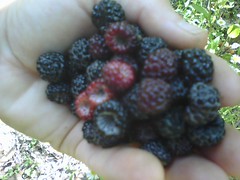 Then we walked about half a mile of road and trail, grazing on black raspberries constantly. I saved a handful to mix into my shelties’ vegetarian dog food while the kids played house at Polaris, the soon-to-be-occupied strawbale group house. Then we all went on a stroll in the woods with my dogs and pygmy goats, ending at my homestead, where the kids enjoyed a couple of rounds on my swings before they turned and continued to Heathcote’s mill without me.
Then we walked about half a mile of road and trail, grazing on black raspberries constantly. I saved a handful to mix into my shelties’ vegetarian dog food while the kids played house at Polaris, the soon-to-be-occupied strawbale group house. Then we all went on a stroll in the woods with my dogs and pygmy goats, ending at my homestead, where the kids enjoyed a couple of rounds on my swings before they turned and continued to Heathcote’s mill without me.
The families at Heathcote, the Intentional Community where I live, are choosing the gift of a pretty amazing childhood for their children. Instead of being plugged into media for long hours each day, these kids spend most of their time outdoors, year round. They have secret “rooms” along the stream where they swim. They have adopted a grove of pet trees in one such area, giving each tree a name. And they established an animal graveyard, where they lay the bodies of mice, baby birds, etc., watching nature recycle.
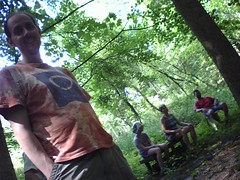 They’re fascinated with the Heathcote labyrinth, streamside in the woods. They’ve always gone there and invented their own sacred rituals. At our recent quarterly retreat, the kids watched as the adults performed our own labyrinth ritual, one after another, walking the spiral in silence. The children sat and held space for the long service. I wondered what they were thinking…
They’re fascinated with the Heathcote labyrinth, streamside in the woods. They’ve always gone there and invented their own sacred rituals. At our recent quarterly retreat, the kids watched as the adults performed our own labyrinth ritual, one after another, walking the spiral in silence. The children sat and held space for the long service. I wondered what they were thinking…
When I was a child I spent endless hours walking our family farm in Kentucky with garter snakes in my pockets and a Tom Sawyer sense of adventure, exploring barns, ponds, woods and fields and riding ponies (after the long ordeal of catching them). I would come home good and muddy with the understanding that I was an animal, carrying stories I knew the grownups wouldn’t understand. Heathcote would have been a primal paradise to me.
Naturally, the Heathcote kids take an extremely idealist view of animals and nature, as I did. To them, the woods and stream of Heathcote are a peaceful, benign, friendly place, their backyard. They’re not growing up on a farm, learning that your 4H project calf is a pet one season and dinner the next. They’re not on the historic American frontier or a small village in India, where nature is a cougar, wolf or a tiger, after your livestock…or you. For them, in modern rural America, even with snakes and snapping turtles that look like dinosaurs, the woods are a friendly home. The biggest boogeyman is the deer tick, which may or may not give you lyme disease, for which medicine is readily available.
They are growing up on another kind of frontier, though. In community, kids as well as adults work on improving our communication, experimenting with better ways of honesty and listening–No matter how old you are, feeling heard is core. Here the kids have a front row seat for the work the adults are doing. And in Open Classroom, they have a safe container for this essential work of community building. It’s no coinsidence that community and communication have the same root!
Hiding Place #641: A 7 X 7 Coleman Tent
Chew on this little ditty. This is absolutely true. I love to joke that one reason I feel almost obligated to be a writer is that I live such a bizarre life and I never have to make anything up.
I like this story to share with you because, in its lighthearted way, it shows the lengths I’m willing to go to hide from (or hide with) my demons. It’s from a series of essays on Hiding Places.
Hiding Place #641. A 7 by 7 Coleman Tent
Sometimes the bogeyman is a flashback of some rapist or the echo of that ever negative parent. It could be that childhood biting dog or one’s inner voice. Or it could be a succession of 5-foot black rat snakes coming in through windows and walls. Okay, on a day in early May of last year, it was black rat snakes.
My dogs were already barking. This was an experience they’d clearly had before. A huge snake was outside on the window ledge, tracing a familiar path to a missing window pane covered loosely by plastic. The plastic was stapled in a couple of places, there to keep the rain out.
This would be a good time to mention that I have an understandable, justifiable childhood trauma around snakes. Okay, they’re sacred and symbolize earthiness and fertility and feminine power because we’re all past that myth in Genesis. But this means nothing to the six-year-old me that went crawdad huntin’ in Jack’s Creek on our farm in Kentucky. You may be thinking I mean crayfish hunting, but since I’ll have no dignity by the end of this story, I might as well confess now that my sister and I were crawdad huntin’.
Granny had driven us in her Olds 98 and outfitted us with her brand new kitchen bucket. Beth and I walked the creek, turning over rocks, jumping back when the bigger crawdads would torpedo out. We rounded a couple of bends, well out of sight of Granny, engrossed.
This would be a good time to mention the Paul Bunyanesque stories my grandfather would tell about cottonmouth water moccasins. Pap claimed that they ate his dairy cows. And with each telling of how he’d gone out into the field and ended the behemoth with a shotgun, the snake got bigger and bigger. On our farm, snake stories were as fishing stories in this fashion.
So when the cartoonlike meeting of engrossed girls and startled cottonmouth took place, there was only one way it could play out–epically. The snake reared up and met us face to face to face. It opened to showcase the cottony room of its mouth. We screamed in chorus with its scream and waved our hands in the air, sending the new kitchen bucket flying. We ran atop the surface of the water all the way back to Granny and the Olds 98, so as not to leave any footprints in the muddy creekbed for the snake to follow.
We told Granny about the snake and the face to face to face and the cottony room from the safety of the car. Now I loved my grandmother and she told me on many occasions that she loved me, too. But this was not her shining moment. I swear to you that her only response was, “You girls go back and get my bucket!!!”
I note for the record that she herself did not retrieve it, either.
So as the black rat snake poked at the plastic, I was amused to find myself considering covering the pane with my own kitchen bucket. Instead I grabbed the staple gun and began stitching a solid seem all the way around, just barely ahead of the snake’s nose. I won that race and darted outside only to watch the snake retreat into an opening under my house where my tub’s drainpipe protrudes. The snake got in anyway.
I had lived in Hina Hanta, the Heathcote shack formerly known as the Hillhouse, for four years. And about two or three times a year I would come upon a small black snake inside. Now, I hate snakes for understandable, justifiable reasons and I would evacuate with the dogs, wait a few hours and return with another Heathcoter to conduct an “all clear.” This worked for me, barely, because I knew the snakes were catching mice and their bigger cousins. And for that reason I was glad of each one I encountered outdoors. But the snake in my window had no fear. This was new and unsettling.
I was unnerved enough to leave the light on when I went to bed. I don’t know why I thought that would make a difference but I found it a comfort. One of my phobias around snakes and my life deep in the woods is that they’ll end up in bed with me. Fertility be damned, I ain’t having that!
But two nights later the choice was not mine. I jolted up to the crazed barks of Echo, my brave protector of the two shelties. She was ranting and racing from the bed to the stairway of my loft room. The sight was simply a shocker: undulating across my floor, blocking my exit, were two five-foot long black snakes, mating, and I mean passionately. They showed no signs of being phased by our waking.
Evacuation being my policy I stood on my bed, holding both shelties by the collar with one hand and pulling clothes off a chair and onto myself with the other, all the while watching the snakes go on and on and on. I would have been struck awed and mystified by the beauty of their fluid movements if I were another person, without my understandable, justifiable fear of snakes. Instead I was all about escape.
But when they finally untied themselves, the snakes were still flush with whatever hormones were giving them boldness and drive. One started to the right, finding the wall and turning toward my dresser, my bed and me. The other went left to the wall and started in my direction, using the dogs’ indoor agility tunnel to make its way toward the bed. I yanked the tunnel away and that snake was discouraged enough to retreat to the stairs where it disappeared into a hole in the wall. When I looked for the right hand snake, it had lifted its head to the top of the dresser. We split. We booked. We ran on the top of the water so as not to leave any footprints in the muddy creekbed for the snakes to follow.
The next day, I brought Bob, a Heathcoter, up to the house, not for an all-clear, but to consult on plugging my many holes. As he stood in my bedroom hearing the story a black snake emerged from a seam where wall meets floor. It sat coiled, as if it were part of our discussion. These snakes without fear, this was so strange and new.
Bob became my champion at community meetings–”Wren shouldn’t have to live like this. She’s got snakes having sex on her floor!!! We’ve got to do something!!!” That was all well and good, but now huge snakes were slinking about at every turn I made. Kitchen, bathroom, upstairs and down, I came to estimate that I had between 8 and 10 five-foot long black rat snakes in my home and I was not in charge.
My friend Charles is fond of saying that the wheels of community grind slowly. The Heathcoters were not going to disappear this infestation in a day or even a week. In the meantime I needed a place to sleep, alone with my dogs, alone, without snakes, alone.
Now, I had observed that black snakes don’t tend to chew holes or dig them. They avail themselves of ones created by the critters they’re hunting. This logic is what inspired me to set up my seven by seven Coleman tent in place of my bed. I believed that if I kept crumbs and such out that mice and their larger cousins would leave the fabric intact, thus creating all the barrier I needed to get a good night’s sleep. For the record, this is not a belief I need clarified in any way. it works for me. If you are of the impression or experience that a black rat snake might in fact chew through tent fabric, there is nothing to be gained by sharing. Do not email me.
The tent became my bedroom within a bedroom. I set up a power strip inside and plugged in my alarm clock and lamp. I inflated my aero bed and each night I called the dogs inside and zipped us within our hiding place.
Enter Mr. Hacker, the snake wrangler.
Although I admit to hating snakes as bogeymen I am an animal rights activist. In lucid moments I know that they’re just returning to their hatching site to breed, being good snake citizens. Even so, I can confess to having a few fantasies involving Pap’s shotgun because I know that I ultimately stuck to my beliefs, even when they were inconvenient. Mr. Hacker of White Hall was probably the tenth humane pest control person I called. The others had said that snakes couldn’t be trapped and that repellents didn’t work. Mr. Hacker had invented a successful trap from pvc pipe and a used eel trap. Bring it on.
He installed the trap and decided to wait a while since I was so dripping with the things. For over and hour I listened to Mr. Hacker tell me stories of catching snakes. He would take the captured ones many miles away. “Sometimes I just slow down and pour ‘em out the window…” I didn’t need such details. He rambled on about family, the cousin who actually hacked up his wife’s lover in some bar, and wasn’t the family name ironic, I really didn’t need such details. Eventually a snake appeared on my stairs and he picked it up with his hands. “Wow, that’s a big one!” That’ll be thirty dollars. Here was hoping he slowed down enough for that one.
As Hacker’s trap caught one after another and sometimes two at a time, I got busy trimming every room and covering every possible entry, on the shack’s interior and exterior and winning my own eel traps on ebay. After a time the snakes stuck to the outdoors and the porch and became shy again.
Homeschooling students attending the World Religions class on my porch helped me name the snakes and when we were not evacuating we were amused and amazed. And my students found my unusual bed amusing as well.
It is winter now. Whether in my walls, some woodpile or rocky outcropping, I know the snakes are asleep. I know my holes are plugged. These nights I just climb in, I don’t zip the door closed. But life is a spiral of seasons, not a straight, evolutionary trajectory. I have grown through this but I, like the snakes, know that spring happens. I might have call to zip up yet.
–Wren Tuatha
The Mixed Blessing of Beavers
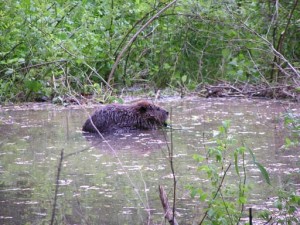 As if I weren’t busy enough myself, I’m taking on someone else’s backlog!!! A while back, a family of beavers built a dam on our neighbor’s land, right on the property line with Heathcote Community. The dam is on a part of the stream that humans had dammed back in the 1800’s with an impressive stone wall, diverting the stream for the Heathcote Mill. The mill eventually ceased operation, was later a horse barn, and has been Heathcote Community’s Conference Center for over 40 years. The pond the human dam created reverted back to marshy floodplane, filling in with soil. Bank-retaining trees, such as Japanese fantail pussywillow, have been planted along the winding stream.
As if I weren’t busy enough myself, I’m taking on someone else’s backlog!!! A while back, a family of beavers built a dam on our neighbor’s land, right on the property line with Heathcote Community. The dam is on a part of the stream that humans had dammed back in the 1800’s with an impressive stone wall, diverting the stream for the Heathcote Mill. The mill eventually ceased operation, was later a horse barn, and has been Heathcote Community’s Conference Center for over 40 years. The pond the human dam created reverted back to marshy floodplane, filling in with soil. Bank-retaining trees, such as Japanese fantail pussywillow, have been planted along the winding stream.
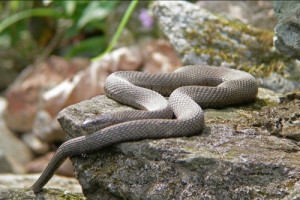 The most notable modern feature is that a driveway now runs along the top of that stone wall, accessing the properties of two Heathcote neighbors. Now that beavers have dammed the stream, their pond had flooded that driveway and cascaded over the stone wall, eroding the gravel and asphalt of the driveway and causing our neighbors to have to drive through a new stream when they come and go.
The most notable modern feature is that a driveway now runs along the top of that stone wall, accessing the properties of two Heathcote neighbors. Now that beavers have dammed the stream, their pond had flooded that driveway and cascaded over the stone wall, eroding the gravel and asphalt of the driveway and causing our neighbors to have to drive through a new stream when they come and go.
Since the beavers are actually on our neighbor’s land, Heathcoters had several academic discussions about them, but didn’t rush to action. One neighbor did, hacking a huge chunk out of the beaver dam and hauling it away in his pickup. It took the beavers only a few days to repair it, and the water level rose quickly over a few days, again threatening the driveway.
Beavers have a superficial reputation for being highly distructive of the environment, felling numbers of trees and flooding areas with their ponds. However, when you look at their activities in more depth, beavers are actually quite a blessing to an area like ours.
 Shortly after our beavers established their pond in the tree filled, marshy area, a family of ducks appeared. Heathcote often has duck pairs pass through, visiting our pond and then moving on to more secluded areas. Now the valley has a safe area for them and I’ve been thrilled to see the babies. Another Heathcoter reports seeing a muskrat at the dam.
Shortly after our beavers established their pond in the tree filled, marshy area, a family of ducks appeared. Heathcote often has duck pairs pass through, visiting our pond and then moving on to more secluded areas. Now the valley has a safe area for them and I’ve been thrilled to see the babies. Another Heathcoter reports seeing a muskrat at the dam.
As soon as the beavers repaired the dam, I saw a family of otters arrive, including at least 3 young ones! This is more good news, not only because the beaver pond is becoming a habitat for a whole new range of wildlife, but beccause otters make holes in beaver dams (to allow larger fish to pass; easy catching on the other side) thus otter holes help mitigate flooding.
Further, the ponds that beavers create help the water table recharge by slowing down the stream and they deposit enriching minerals in the soil.
So how can Heathcote and our neighbors cohabitate with our beavers and their neighbors–ducks, muskrats and otters? I’ll be meeting with my neighbors in the next few days to discuss solutions I’ve researched. I’ll report back soon. I’d love to hear your experiences with beavers, too!
Lucky Pigs & Not So Lucky Pigs
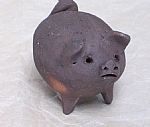 I heard a good one from Charlie, a customer at the Hunt Valley Mediterranean Festival. You can view it through whatever lens you want, vegetarian or carnivore. He was buying one of my three legged Peruvian lucky pigs ( a Ten Thousand Villages fair trade craft, pictured) for a friend who’s a pig farmer. The story goes that there was this three legged pig and folks asked the farmer how the pig came to have only three legs. The farmer explained that the pig had saved his entire family from a house fire–came in and woke everyone up and saved them all. The farmer waxed on and on about how they all loved the pig dearly are regarded it as one of the family. Since that didn’t explain the missing leg, folks would ask again, how did the pig come to have only three legs? Oh, said the farmer, a pig like that you don’t eat all at once…
I heard a good one from Charlie, a customer at the Hunt Valley Mediterranean Festival. You can view it through whatever lens you want, vegetarian or carnivore. He was buying one of my three legged Peruvian lucky pigs ( a Ten Thousand Villages fair trade craft, pictured) for a friend who’s a pig farmer. The story goes that there was this three legged pig and folks asked the farmer how the pig came to have only three legs. The farmer explained that the pig had saved his entire family from a house fire–came in and woke everyone up and saved them all. The farmer waxed on and on about how they all loved the pig dearly are regarded it as one of the family. Since that didn’t explain the missing leg, folks would ask again, how did the pig come to have only three legs? Oh, said the farmer, a pig like that you don’t eat all at once…
The Hunt Valley Mediterranean Festival does have some unlucky lambs and other critters being served. But it also has several vegetarian entrees and side dishes. Several Heathcoters came by and gave the fare high marks, so come on down! I’ll be sampling the falafel and stuffed grape leaves tomorrow!
Various Mediterranean dance troupes will be performing throughout the day. There are games for kids and several craft and food vendors, including a Middle Eastern grocery!
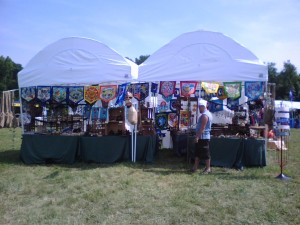 Heathcote Earthings is thrilled to own two new curved EZUp canopies. Not only do they perform well in the rain, but they make us easy to spot in a crowd (as if our batik flags and necklace branches didn’t do that already)! This is a view of our booth at the 2008 Maryland Faerie Festival.
Heathcote Earthings is thrilled to own two new curved EZUp canopies. Not only do they perform well in the rain, but they make us easy to spot in a crowd (as if our batik flags and necklace branches didn’t do that already)! This is a view of our booth at the 2008 Maryland Faerie Festival.
Launching the Hippie Chick Bubble
As a writer, I’ve often joked that I never have to make anything up. I have the laziest muse on record. I just stand in one place and crazy, goofy, fringe things happen. Or maybe my eyes are just open.
I’ve certainly lived an interesting life. I grew up in a haunted house, been “out and proud” and “genderfluid”, been to film school, been a widely published performance poet, and I live in what some would call a “commune.” I lead homeschoolers in classes that take place up in trees and in the creek. And now I’m planning a child as a polyamorous coparent. It’s not my stories but the rules of life that I’m making up as I go. This is my diary.
You can use tags to follow many threads through my entries over time–coparenting, intentional community, veganism, love, sustainability, etc.
I’ve come to realize that living at Heathcote, a cooperative community in Maryland, has helped me to walk my talk more authentically than if I lived on my own. Read about my community experiences here on Hippie Chick Diaries. I’ll add content to help you explore if Intentional Community is right for you, such as reviews of communities I visit and links to communities and information organizations.
Watch for regular features of this site, like the bumper sticker of the week, and emails to and from my favorite online social network friend, onewitheverything. Coming soon is my list of great names for a band. Feel free to email your suggestions! Some posts will be longer articles with photo galleries and links to explore topics further.
In this first post I have to sing big love to Paul, of Co Op Tek, and Roni, of Skinny Minny Media, for walking me blindfolded through website development. I’d trust you guys in traffic! Thanks for your patience and excitement on this project.
Here we go! Keep that Hippie Chick bubble off the ground!
–Wren Tuatha
